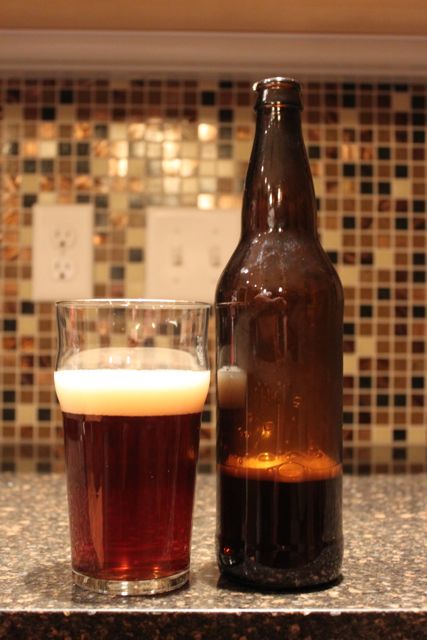When I returned from Kauai, two, two batches of beer were waiting to be poured out of bottles.
Rye Ale and Stout
Rye is a trend in the drinks world. You cannot take a spin in a liquor store without hitting a bottle of rye whiskey and rye is taking hold in the beer world as well. In the past, I have tried my hand at rye beer recipes. I found the resulting beers to be more of a rye novelty—not a lot of rye character—than a rye beer—lots of rye character. For a late winter/early spring beer I decided to amp up the rye quotient to produce a more rye forward beer:
What’s the story? I started off with the Northern Brewer American Rye Ale recipe using Wyeast 1056 American Ale yeast. This is a recipe that I have made before with good results.
However, I added 1 pound of Weyermann Chocolate Rye Malt as a steeping grain to increase the rye flavor to something more noticeable. Otherwise, the recipe is as called for from Northern Brewer. The result is an aggressively rye flavored beer. As it stands now the taste is teetering between aggressive novelty and something that can be worked with to produce a really standout beer.
Northern Brewer also has a Rye Stout recipe that has been getting some pretty rave reviews. So, I brewed a batch with some modifications:
Primarily, I reduced the boil time of the hops to reduce the bittering from a predicted ~55 IBU to something more like ~40 IBU. I prefer my stouts to be less bitter and the 40 IBU mark seems about perfect to me.
Unlike past beers, I waited an additional week to uncork the first bottles giving them at least three weeks of bottle conditioning.
The result? This may be the best beer that I have brewed in over a year of doing this. The flavors are balanced very well, not too bitter and not too much alcohol. The rye flavors are peppery enough to shine through the heavy malt flavor of the stout.
As a known fan of Surly’s Coffee Bender, I cannot help but think that this beer could really be sent to the moon by the addition of coffee in some way. I think I have found my next recipe.
Australian Sparkling Ale
Sometimes, when you get a catalog from Northern Brewer or another homebrew shop there are recipe kits that just grab your imagination for some reason. The Australian Sparkling Ale did that for me.
The beer is described as a descendant of a descendant of a Burton ale. A little research—okay, I used Google—led me to several descriptions of a Burton as an antiquated British ale style. That did not really help me and I have not had the time or inclination to spend any more effort to figure out what a Burton ale really is. Why? Because my batch of Australian Sparkling Ale is in the carboy, fully krausened, and about a week away from bottles.
As I was pouring in the specified Pride of Ringwood hops I could not help think that I was making a Lord of the Rings inspired beer. Something about the word Ringwood that makes me think of wizards or druids or mysticism. Come to think of it, there is something mystical about putting all these ingredients into a container and ending up with beer. Heck, it’s downright magical. Maybe I am a wizard.











